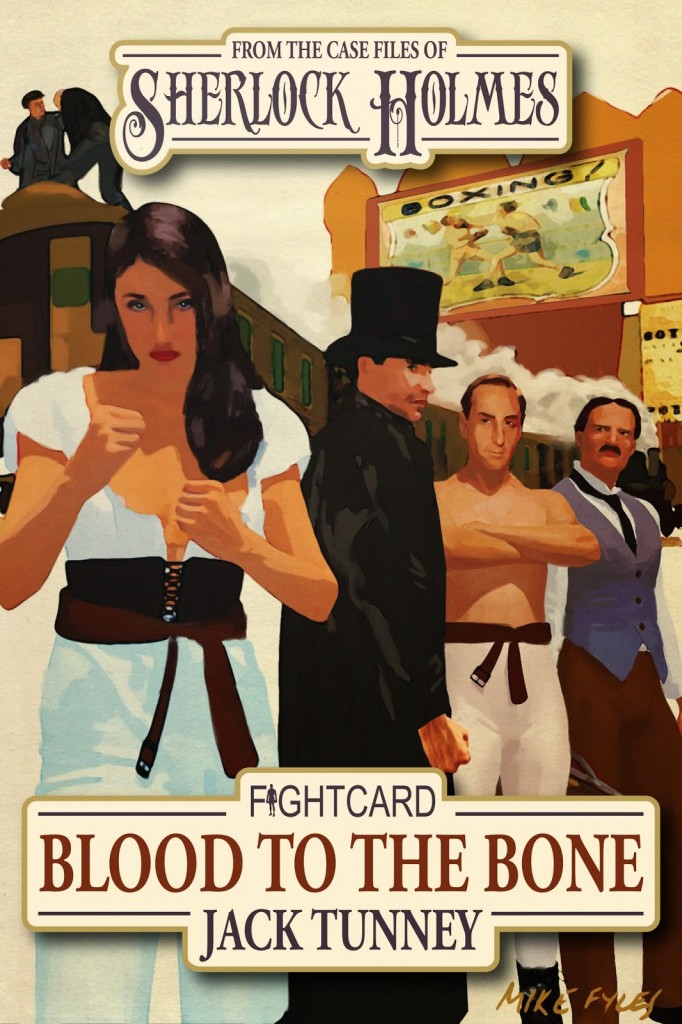Book Review: Blood to the Bone
Blood to the Bone (Fight Card)
By Andrew Salmon
As promised in the review of Work Capitol, here follows the review of Andrew Salmon’s second Fight Card – Sherlock Holmes story, Blood to the Bone, a novel about women’s bare-knuckle boxing in the late nineteenth century.
In the story, which is set in 1888, we meet Eby Stokes, a female boxer whose husband and co-fighter has disappeared under mysterious circumstances. Sherlock Holmes decides to investigate and finds Richard Stokes, only to witness his murder. From that moment on, Holmes knows that it’s not a simple murder, but that Stokes’ death is one of many pieces of a puzzle to a plan which could compromise national security.
Blood to the Bone once again features a very hands-on Holmes, who needs his fists and his brain to solve a case and save Eby Stokes, well, I say save. In Eby we meet an incredibly strong woman who is able to hold her own and who fights against the odds to keep ahead of the game. Very quickly, both Holmes and Watson learn that she is not a client, but a partner in the fight against terrorists threatening London. Eby Stokes is as much in danger as her husband was, whose involvement with the terrorist network slowly unravels through the novel.
Once again, Andrew Salmon (listed as Jack Tunney in the Fight Card series) writes beautiful prose which pulls us into the carnival and half-legal boxing rings, where most of the story is set, and allows us to trace the steps that Sherlock Holmes takes, as usual three paces ahead of John Watson. Yet, the detective cannot solely rely on his brain and logical reasoning, but he participates and sets up fights in order to find suspects or to follow clues. Only this time, he is not alone. Eby Stokes makes for a great fighting partner and together they are able to slowly solve the puzzle, even if a few cuts and bruises cause Dr. Watson to question the somewhat drastic approach to the problem.
While Work Capitol was full of links to the Canon, Blood to the Bone refers more frequently to historical events of the 1880s, ending with a fictionalized explanation for one of the most famous photographs in history (which I will not name, as it would spoil the effect). I enjoyed the historical links and references very much, and loved the solution of the story, which reads almost like an action film – the images conjured up by Salmon’s words are that vivid.
But what sticks most about this story is the lady fighter who is written as a much more complex character than Doyle usually wrote his female characters. She is strong and vulnerable, loving and vengeful, independent and a team player, and she gets an ending very deserving of her character.
I am usually not a fan of author’s notes, as I tend to read books for their content and not the author’s comments, but Andrew Salmon’s short essay on his writing experience helps to understand the importance Eby Stokes has for the author himself – and, in hindsight, makes her character even more fascinating and important.
I thoroughly enjoyed reading both of Andrew Salmon’s pastiches and cannot wait for the next one which will hopefully be available by next Christmas.
You can buy the book for kindle at amazon.com or amazon.uk. For more information on women’s bare-knuckle boxing, visit the Fight Card Website.

Maria teaches English Literature at Leipzig University, Germany, published a German introduction to Sherlock Holmes and is a fan of all things Holmes – but especially of the Canon stories and Sherlock BBC. Contact her at @stuffasdreams
